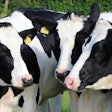The USPOULTRY Board Research Initiative is requesting pre-proposals in four areas: Clostridium enteritis in broilers, reovirus vaccines for turkeys, intestinal protozoa of turkeys and the euthanasia of large birds. The deadline for pre-proposal submission is Nov. 1.
Clostridium Enteritis in Broilers
Clostridium enteritis is an economically significant disease of broilers caused by the action of coccidia (Eimeria sp.) and Clostridium perfringens in the intestinal tract. The disease may cause significant mortality or may present in a subclinical form characterized by poor feed conversion and growth rate. In the past this disease was primarily prevented by use of antibiotics in feed. Clostridium enteritis has become an important disease in many broiler companies that no longer use antibiotics.
Reovirus Vaccines for Turkeys
In recent years segments of the turkey industry have seen an unusually high instance of lameness resulting from tenosynovitis. Reovirus appears to be the causative agent based on virus isolation and serology. Current evidence indicates that the reovirus isolates involved in this disease may be serologically distinct from the reovirus isolates used in currently available vaccines.
Intestinal Protozoa of Turkeys
Intestinal protozoa are a significant health challenge for the U.S. turkey industry. The organisms chiefly associated with disease include Cochlosoma anatis and Trichomonas sp. Since the withdrawal of roxarsone and nitarsone, there are no effective treatments or preventions available for these protozoa. Affected flocks have decreased livability and weight gain and poor feed efficiency and uniformity, resulting in significant economic impact to the turkey industry.
Euthanasia of Large Birds
The current euthanasia standards used by the poultry industry are the 2013 AVMA euthanasia guidelines, which state methods acceptable for euthanasia of poultry. However, the AVMA guidelines do not include a list of approved tools or criteria that must be met in order for a tool or mechanical system to be acceptable for euthanasia. For individual poultry, manual cervical dislocation is the primary method of euthanasia on farms, but may not be appropriate for large poultry or may not be the preferred method for farm staff. As an alternative, various tools have been developed for on-farm euthanasia of individual large chickens and turkeys including mechanical cervical dislocation, captive bolt and gas euthanasia. However, none of these tools or systems is officially endorsed, and there are no provided criteria or means of verifying if tools meet the standards for euthanasia according to the AVMA guidelines. There is a need to objectively evaluate the safety, functionality and humane outcome of mechanical tools and systems that can be used for poultry euthanasia to meet the AVMA performance standards.


















